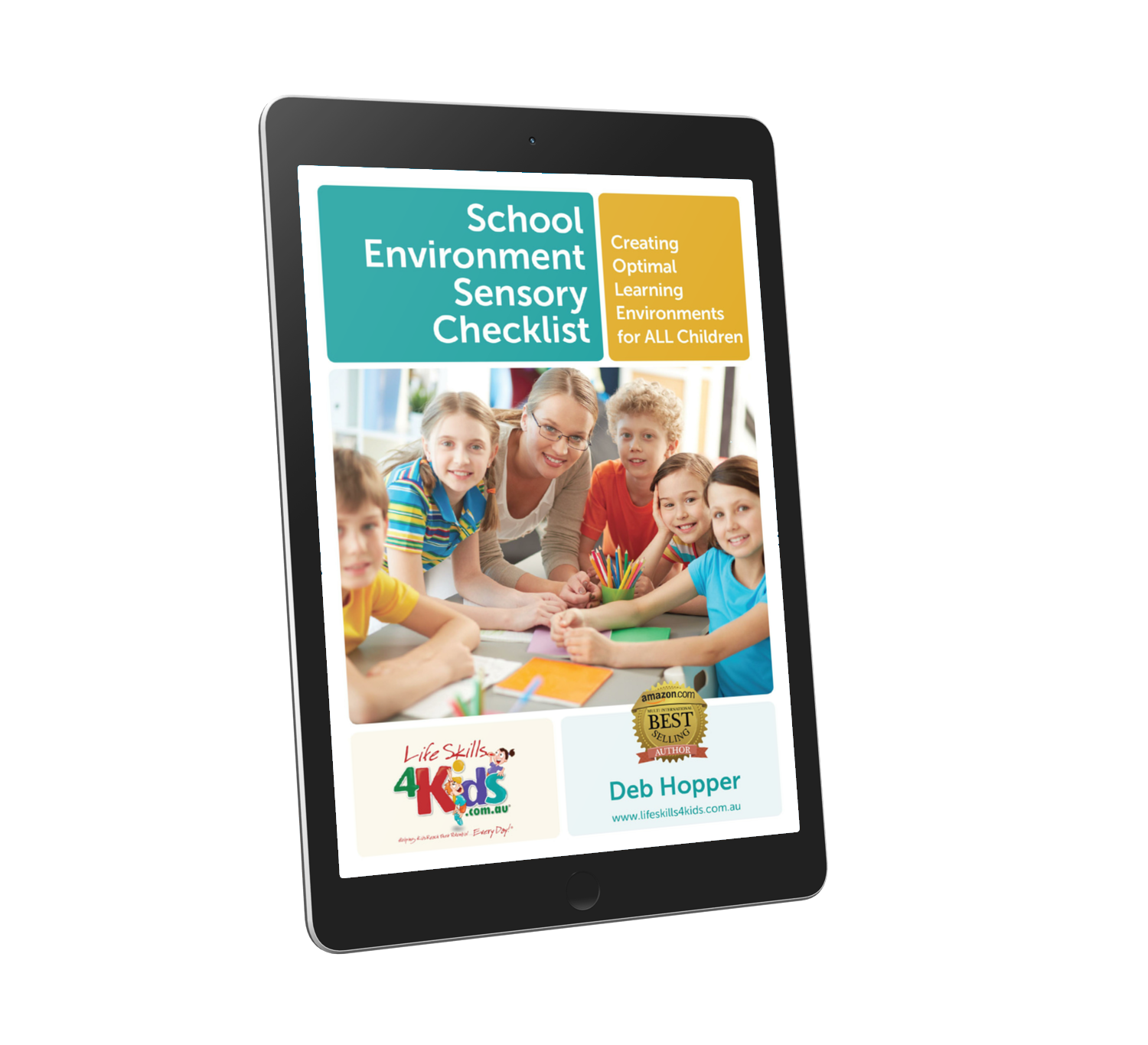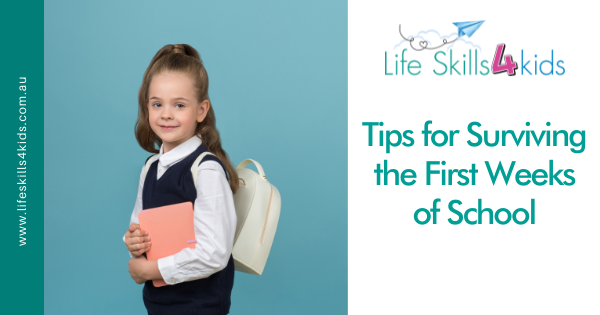Planning for Back to School Success
Summer holidays are ending here in Australia in the next few days. As parents’ ideas for how to fill in time start to dwindle, and we finish off the back to school shopping, it’s really important to talk to and plan with our kids a successful transition back to school.
The first couple of weeks of school are often highly stressful at home as we all transition back to waking up earlier, getting back into the morning routine of things and getting started faster in the morning.
Back to school can also be anxiety producing for many children (of all ages).
What are the triggers for potential school anxiety which can affect you and your kids?
Causes of Back To School Anxiety in Children & Parents
- feeling rushed
- disorganised
- morning routine is hard to get back into
- difficulties in getting out of bed/out of the house on time
- parents are anxious about the kids being ok
- kids can be anxious about:
- What will my new teacher be like?
- Will my new classmates like me?
- Will I be able to sit with my friends?
- Who will I sit with at lunch?
- What if I miss the school bus?
- Are my clothes ok?
- Will people laugh at me?
- What if I don’t understand the lessons?
- Will I look stupid?
How, as parents can we reduce anxiety in our children to a minimum and facilitate a smooth transition back to school?
If your young person has autism, check out this article too.
Strategies For Planning for Success and Reducing Back To School Anxiety In Children
All of us, parents and children alike, thrive on routine and this holds especially true when, as a family, we are faced with the prospect of going back to school.
It is important to look at ways of reducing anxiety around that date and finding a way to make the return to school an exciting, planned and positive experience.
#1. Timeline/Calendar
- Make a timeline together or go shopping and choose a big calendar that you both like.
- Calendars are often available for the academic year and these can be perfect to prepare all of the family for getting back into the swing of school life.
- A timeline can be a great tool in helping all of the household reduce any school anxiety that they might have.
- All kids like to be involved in decisions that effect them and their families.
- Make a timeline that covers the last 2 weeks before school begins and the following 2 weeks when school has started.
- For the last 2 weeks of the holidays, plan in treats and rewards for all of the family AND also plan in challenges which you all must achieve to get the treat or reward. For example, all of the family must get up 10 minutes earlier each day for the first week of your timeline to be able to enjoy the daily treats that are planned.
- Plan these joint challenges so that they help your kids (and you!) to cope and get used to the morning routine again or getting out of the house on time each day.
- For the first 2 weeks of school, plan in after school activities, activities at the weekend and decide in advance who will pick your kids up from school each day.
- This visual structure, which you can display somewhere for you all to see, will provide a more gentle re-introduction of the back to school routine than if you suddenly panic on the night before school and try to sort yourself and your kids out!
- If you leave everything to the last minute you are creating anxiety in children and yourselves – which is a recipe for disaster on the first day back and will take days or even weeks to pull back.
#2. Make A Morning Schedule
- A visual timetable can be priceless for reducing anxiety and enabling your kids to smoothly transition from holiday to school time.
- Visual timetables are often used in school, so before the end of the school year, find out from them what sort of symbols, words, pictures they use on a daily basis.
- Using familiar visual cues at home can increase confidence in your kids and this will also spill over into reducing any school anxiety they may have.
- If it’s possible, this is a great activity to include your kids in well before the stressors of imminent school, you can design and create a morning schedule together. You can make this activity fun by using timers to find out how long it takes to get on a school uniform or make a packed lunch or pack a swimming bag.
- When you have worked out the timings of activities that you need to include in your morning schedule, then you can add those timings into it and find out what time you will all have to get up to be ready to leave the house at a set time.
- Allowing kids to take ownership of their morning schedule by working it out with you is a great way to increase their feeling of responsibility, whilst reducing anxiety at the same time.
#3. Parent/ Child Check-in Time
- We ALL like to feel special and have quality, one-to-one time with the people we love. Add into your calendar a daily Golden Check-In Time at home with your child. (You could have two of these if it works, one in the morning and one in the evening).
- Plan a 10-30 minute time with your young person and add it to the calendar.
- Make this time special and choose together what you want to do during this time, examples could be:
- make and share hot chocolate with marshmallows and chill out on the sofa together (NO mobile phones, NO interruptions!)
- share a game of footie, take your dog for a walk, go outside and build a den/go to beach
- have a pamper session – a manicure, pedicure, facial – whatever you both fancy!
- build a model together, paint together
- The possibilities are endless!
- The most IMPORTANT thing to remember is that while you are enjoying each others’ company, you also chat about how your child is feeling, making sure they are ok, that school is ok and they are emotionally in a good place.
#4. Meet your child’s teacher
- Your child’s teacher will be only too happy to meet up with you to discuss and help with reducing anxiety for your kids.
- Every teacher strives for a happy, productive classroom environment where school anxiety is at a minimum.
#5. Remind your child that it’s normal to feel a little uneasy and teach them strategies for keeping calm
Transitions and change all bring a little uncertainty.
Talk with your child about how everyone feels uneasy as they adjust back into normal work routines. If you work, talk about how it’s always hard to go back to work after a holiday.
Talk about what strategies you use to feel more in control, such as planning out the day/ week and how you feel better when you go for a walk, to the gym etc. If you can, invite your child to come for a walk or to the gym with you.
Overall, with some planning and forward thinking, the trauma of returning to school can be dealt with effectively and in a positive way. Taking a bit of time to put some strategies in place can reap dividends for not only your kids but for the whole family too.
School Environment Sensory Checklist (eBook)
Do you have children in your class who struggle with autism, learning difficulties or reduced concentration? Then the School Environment Sensory Checklist (SESC) is your entry into transforming your classroom!
Quickly and easily evaluate your classroom from a sensory perspective to enhance learning needs of all children, including children with autism and learning difficulties.
Have less distracted children who listen for longer and enjoy times of focused learning and easier transitions. Whether you are a newly qualified teacher or have many years experience, the School Environment Sensory Checklist (SESC) will refresh your vision for your classroom!


